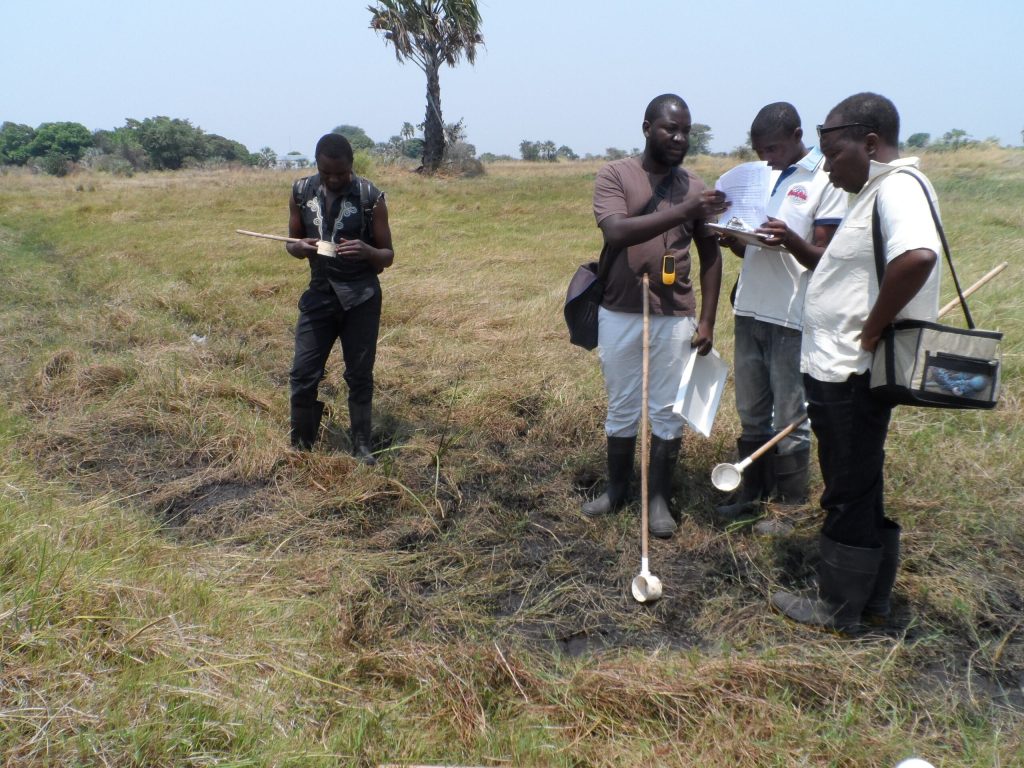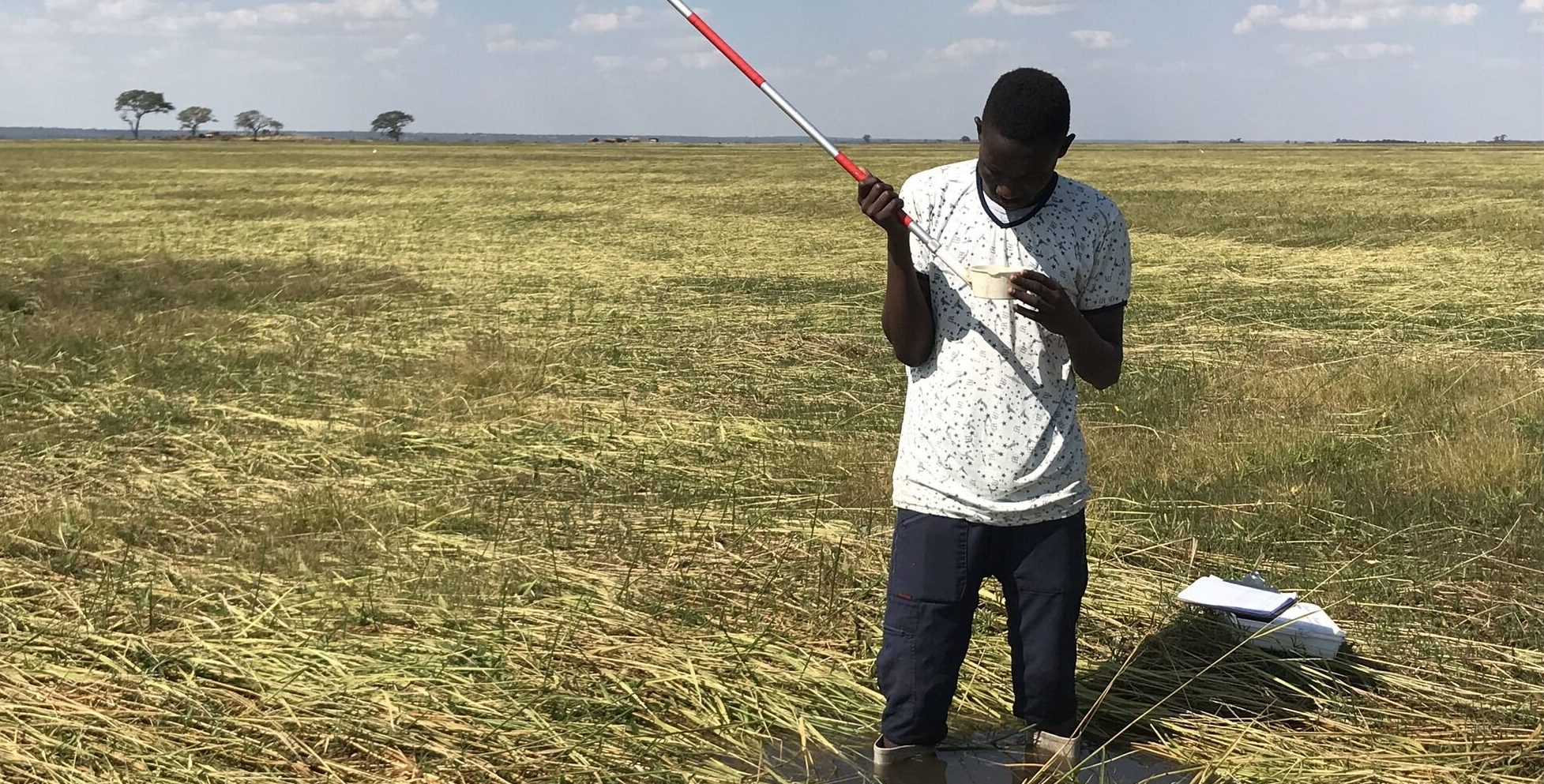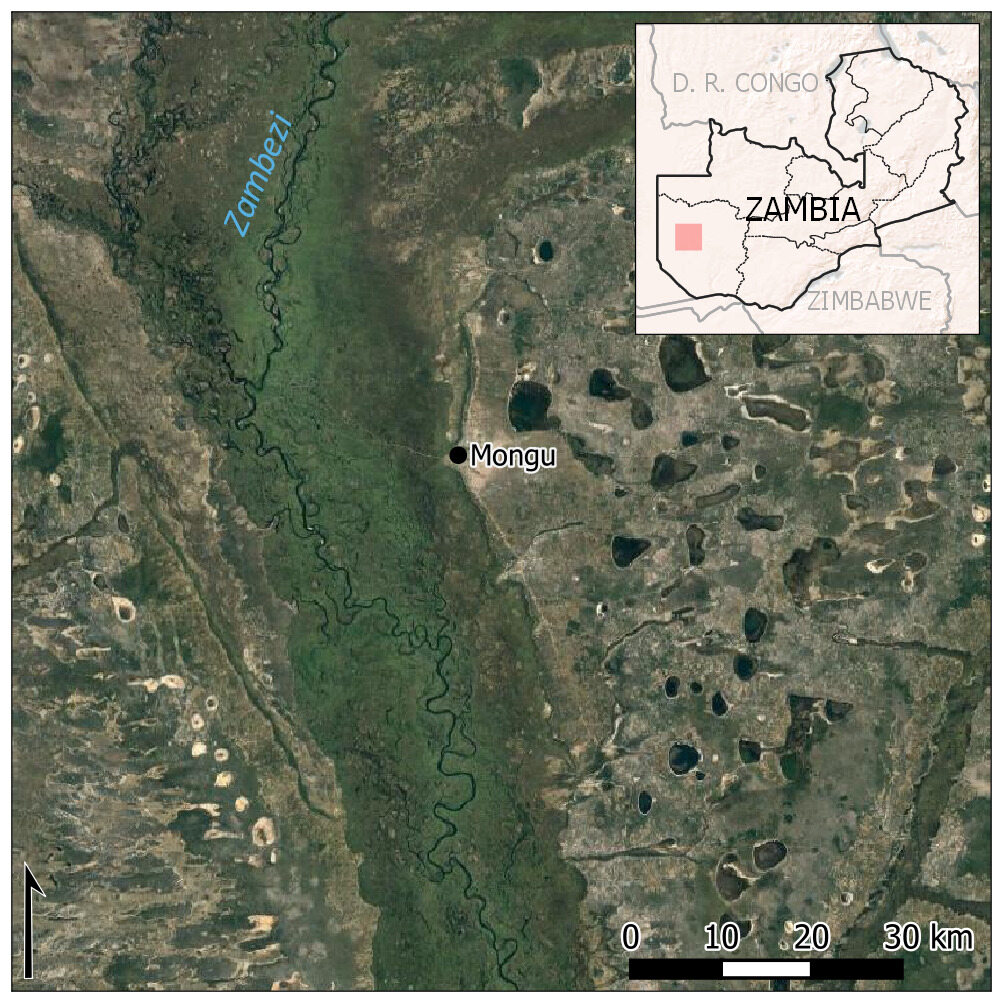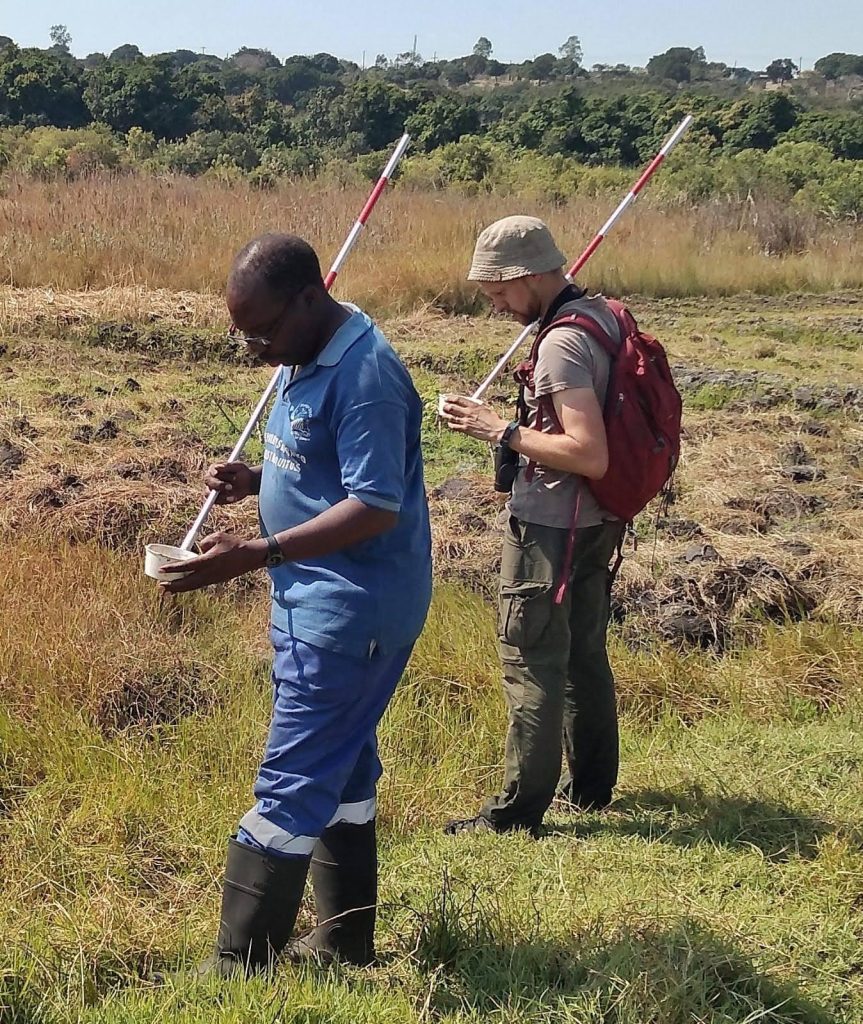Using hydromorphology to inform public health strategies in Africa
| Lead | University of Lincoln |
| REF Panel | B – Physical sciences, engineering, and mathematics |
| REF UoA | 12 – Engineering |
| Locations | Zambia |
| Funders | Canadian Institutes for Health Research, Natural Environment Research Council (NERC), Queen Elizabeth II Diamond Jubilee Scholarship |
| Funds or grants | NERC Standard Grant, Queen Elizabeth Scholarships Advanced Scholars program |
| Partners | In Canada: Canadian Association for Global Health (CAGH). In Zambia: Zambezi Water Resources Management Authority (WARMA), Zambezi EcoHealth Partnership (ZEP), Ministry of Health (MoH) |

“The Ministry of Health put a huge amount of resource into those early meetings. They convened big meetings with senior clinicians and managers in the health system for a day or two at a time, investing a lot of resources, time, and effort into receiving us. From the beginning, it always felt to me like a Zambia-led project.” UK-based researcher
Despite public health interventions, malaria is still prevalent in some regions across sub-Saharan Africa. UK-based, Zambian, and Canadian researchers studied malaria mosquito control strategies in the Upper Zambezi catchment, Zambia’s Western Province. Genetic sequencing revealed an unexpected prevalence of daytime outdoor malaria mosquitoes in the floodplains, which evade conventional interventions like bed nets and indoor insecticide spraying. Researchers developed national malaria transmission maps with annual flood habitats suitable for these species, including at-risk area estimates and climate change projections. The findings fed into Zambia’s national malaria elimination goal strategies.
Key Impacts
Increased understanding of malaria trends within the policymaking community and enhanced vector control strategies
- Research highlighted that seasonal flooding along major rivers and floodplains extends malaria transmission seasons via secondary vector species. This new insight filled a significant gap in malaria prevention strategies.
- Hydroclimate national and provincial maps identified areas in need of more malaria control. These maps helped the Zambian MoH plan and implement malaria control and elimination interventions (e.g., village-scale planning).
Capacity building for environment and health research in Zambian Western Province
- Field training and use of technology training was delivered to six local University of Barotseland students, empowering them with skills in GPS usage, study design, sampling, data recording, and field logistics.
- The research facilitated successful applications for external funding, enabling three Zambian physicians and health workers from Western Province to begin PhD training in Canada.
Strengthening collaboration for Zambia’s health system
-
- The research contributed to strengthen and sustain collaboration within the Zambezi Ecohealth Partnership (ZEP), an initiative led by the MoH, WARMA, and the CAGH that provides evidence to address pressing health and wellbeing issues, and climate change effects in western Zambia.
- In collaboration with ZEP, the research supported local capacity through environmental information sharing and the promotion of innovative spatial approaches to address health priorities beyond malaria (e.g., climate-related challenges to accessing health facilities)

Underpinning research enablers


Acknowledge the role of research networks in amplifying impact
- The value of academic and non-academic collaborations: Partnerships with established networks (e.g., ZEP), alongside work with MoH, embedded a collaborative approach among diverse researchers and policymakers for pre-grant discussions around health challenges. A strong focus on equitable partnerships fostered information sharing, aligning priorities, and leveraging collective expertise and evidence from different knowledge systems.
- Enhancing project’s financial capacity and widening partnerships: Working alongside CAHG and ZEP allowed the project to tap into a wider pool of funding opportunities (e.g., UK and Canadian funds), expand the type of activities implemented, broaden the network of interdisciplinary and international collaborators, and support long-term partnerships.
Support research user involvement and ownership over research process and outputs
- Strengthening research applicability through transdisciplinarity: Active engagement with Zambian health officials, clinicians, and frontline workers provided detailed data into local health priorities. Lozi community leaders and people living in affected areas provided insights on the benefits and challenges of flooding, complementing climate change adaptation data and refining findings’ relevance.
- Increased resources and effort from local partners: The MoH in Zambia invested significant resources into the research project, establishing a strong sense of ownership and commitment from the beginning. This Zambian-led collaboration facilitated smoother cooperation between international researchers and local stakeholders, maximising the project’s potential impact.
Recognise the role of serendipity
- Taking advantage of emerging opportunities: Research benefitted from an unexpected and long conversation with a senior official from the district provincial health office. This provided detailed understanding of local priorities and shaped the project’s research focus on the effects of flooding.
